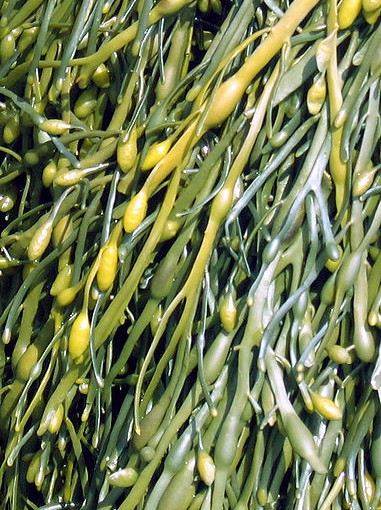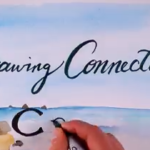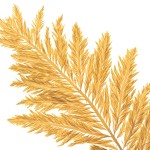I love seaweed. Maybe it’s because I am from California and we are all plant loving hippies or maybe it’s because they’re the underappreciated overlords of the sea and I respect that. Seriously though, without these photosynthesizing wizards, life in the ocean would cease to exist. Thus, in an attempt to bring appreciation to the lower bits of the food chain, I give you Weed of the Week. For the next month, I will focus on different species and highlight the various reasons that these weeds represent a force to be reckoned with.
____________________________________________________________________________________
This week I chose to revisit one of my very first post here at DSN, “S.O.S. Please someone help me…” discussing perhaps the coolest intertidal weed out there, Ascophyllum nodosum. Ascophyllum has been given this delineation for many reasons, but perhaps the greatest reason is because it is one of the few (only?) marine examples displaying what is known in the terrestrial realm as the “talking trees hypothesis.” A concept I have unofficially officially renamed the Rihanna hypothesis. The main postulate here is that a seaweed can create it’s own S.O.S. chemicals to call in the bigger predators when it is getting nommed by the lesser grazers on the intertidal totem pole.

We can break it down a little like this…
“S.O.S. please someone help me. It’s not healthy… for me to feel this way
Y.O.U. are making this hard, I can’t take it, see it don’t feel right.”
Despite her continuously questionable relationship with an artist who will go unnamed, this song reserves Rihanna a special spot in my heart. Though it may appear to be her rambling on about some guy she’s cuckoo for Cocoa Puffs over…as one who dabbles in the fine scents of chemical ecology…I know better. Little did you know (or she know for that matter) Rih-Rih was just droppin’ some beats about chemically-mediated tritrophic interactions.
The easiest way to explain this concept is with my mad graphic skillz (Witness the awesomeness below). When you break it down, “Tritrophic interactions” are essentially interactions between organisms on three different levels of a food web. (i.e. seaweeds on the bottom, snails in the middle, and Mr. Crabs being the boss on top). The cool part is when we get into the “chemically-mediated” part, that’s where my girl Rihanna makes her entrance.
Intertidal Bouncers
Imagine yourself as seaweed. You’re chillin’ in the intertidal-hood. You’re lying there photosynthesizing and other seaweed-y things when…
NOM NOM NOM…a snail comes out of nowhere and starts chowing down on you (Step 1).
Not cool bro. Not cool.
Luckily, you blast the boombox and Rihanna makes her musical entrance. When you can’t take the grazing anymore and it don’t feel right, you send out your chemical signals broadcasting “SOS! Please someone help me!” Your distress signals are sent throughout the intertidal-hood (Step 2). These chemical cues attract the snail’s predators saving you in the process (Step 3).
In laboratory flume studies, researchers discovered this made for T.V. drama between the seaweed, Ascophyllum nodosum; snails, Littorina obtusata; and snail predators, the crab Carcinus maenas and the fish Lipophrys pholis.
When conducting experiments, researchers even simulated grazing using a metal file to separate whether the effects seen were from snail damage in particular or simple mechanical damage of the seaweed. Interestingly, the crab predators in particular chose the snail damaged seaweed over the seaweed with fake grazing, showing that it is not just mechanical damage that elicits these help cues, but snail damage in particular.
Ascophyllum calling out for it’s own intertidal bouncers? Just another checkmark on the list of why seaweeds are freaking amazing!!
This Weed of the Week brought to you by:
Coleman, Ross A., Ramchunder, Sorain J., Davies, Kelly M., Moody, John A., and Foggo, Andrew. Herbivore-induced infochemicals influence foraging behavior in two intertidal predators. Oecologia 151 (2007): 454-463
Heil, Martin. Indirect defence via tritrophic interactions. New Phytologist. 178 (2008): 41-61








Now…can you set up something like that for Humans?
That’s amazing. I always thought L obtusata was grazing on the epiphytes of Ascophyllum, not on the seaweed itself.
Nice connection to pop culture too . . . .
Really freak in awesome! I will share with my high school marine science class in the morn.
That is very funny! I signed up for a Skype call with you, but I just found out it’s on the same day as my Plastiki call, hopefully the Plastiki is earlier in the morning, I’m checking.
That is neat how the crabs picked the snail eaten algae over the fake snail eaten algae too.